A ‘once-in-a-generation’ project nears final OK at Willets Point, Queens
March 15, 2024, 5:30 a.m.
The project faces scant opposition, notwithstanding some lingering concerns.
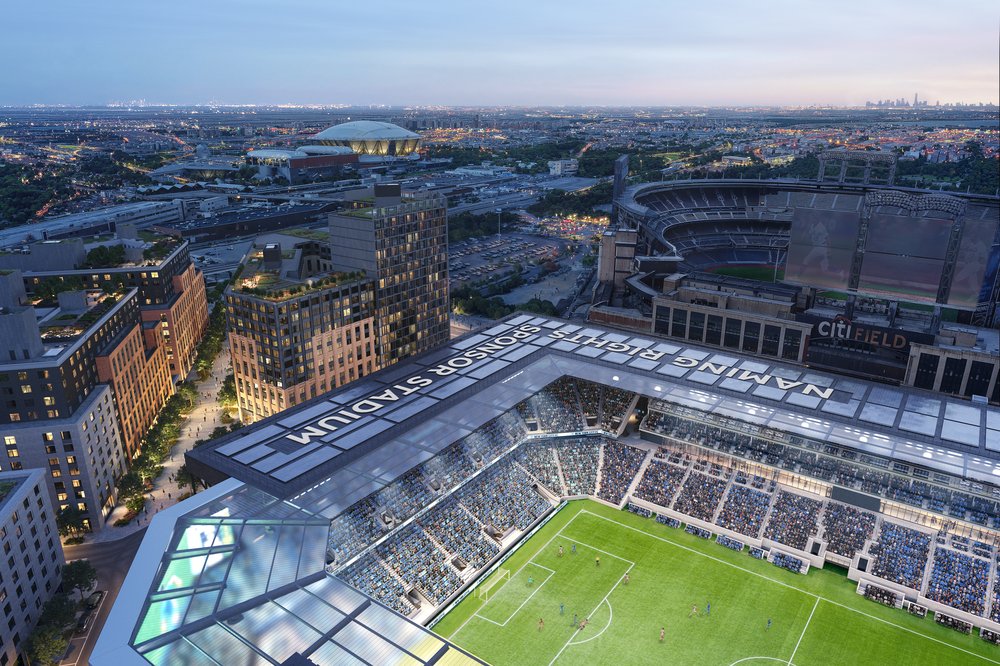
Francisco Moya, born and raised in Corona, Queens, said he learned how to play soccer with his dad on the lawns of Flushing Meadows-Corona Park, “in the shadows of Willets Point.” His dream was to one day play for “the greatest football club in all of the world, FC Barcelona.”
Instead, the city councilmember entered politics, but his path eventually returned to futbol, and to Willets Point, this time as perhaps the loudest champion of a $780 million soccer stadium for the New York City Football Club. That vision came a step closer to reality last week when the City Planning Commission approved an ambitious plan to revitalize Willets Point, a 62-acre tract long defined by auto body shops and urban neglect, but also wetlands.
The City Council is expected to approve the plan's final phase in the coming weeks to make way for the construction of the 25,000-seat stadium next to Citi Field along with a 250-room hotel, a public school for 650 students and 2,500 units of affordable housing, including 133 homes for homeless New Yorkers. It also will be a boon to Mayor Eric Adams, who called it a "once-in-a-generation project."
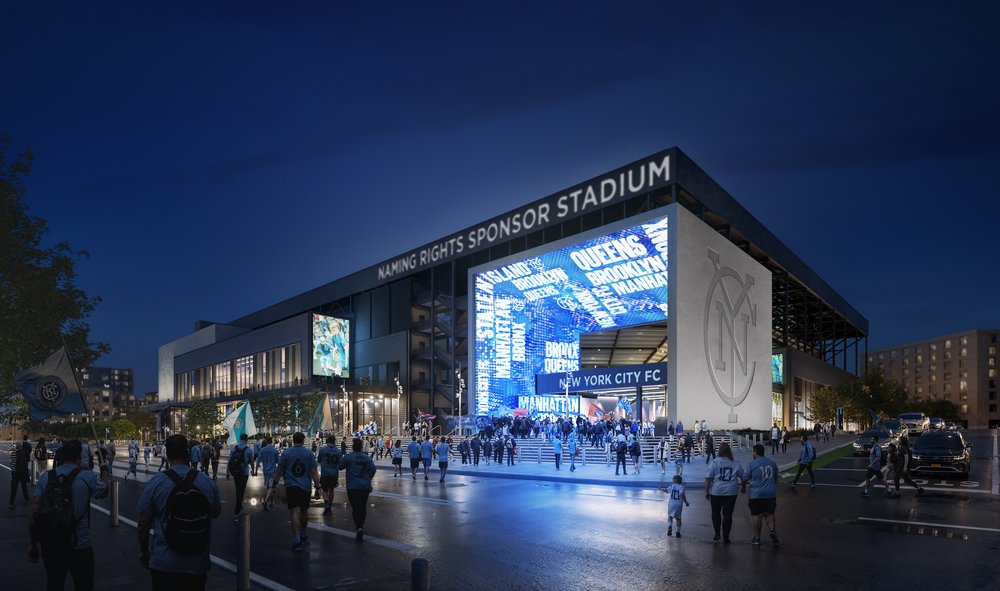
Although the project faces no major opposition, criticisms persist that the city gave developers too much in economic incentives and forwent hundreds of millions of dollars in tax revenue.
Environmentalists also said they worry that the project will cause further ecological harm to the area's long-underappreciated wetlands. A handful of merchants who have not yet been forced out also stand to be displaced.
“Mayor after mayor moved the ball down the field in Willets Point, and our administration is delivering on this transformative vision with the largest 100% affordable housing project in 40 years, 16,000 good jobs, $6 billion in economic activity, and a fully privately financed soccer stadium,” Adams said in a statement.
Phase I of the project, which includes 1,100 residential units, has already been approved. Approval of Phase II, which includes the stadium and another 1,400 housing units, is expected to follow because of the Council's "member deference" rule, in which it votes in line with the member representing the area where a project is based – in this case Moya. Queens Borough President Donovan Richards also gave his backing.
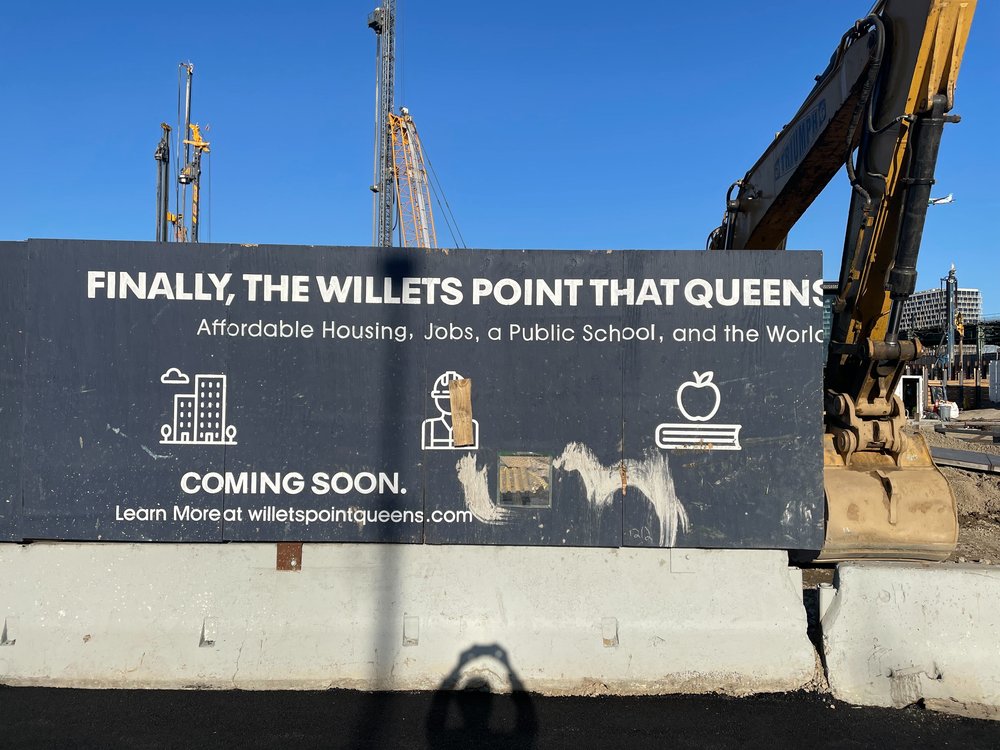
Even opponents acknowledged a certain inevitability to the plans. That includes business owner Arturo Olaya, who still does business in the area. Olaya said he’d earned a living for 28 years by providing auto upholstery services and sun roof repairs for car owners.
“I was right there,” he said, pointing to a nearby brick and mortar business.
But he said that many of his fellow business owners were forced out a decade ago. The city bought out some of the business owners under the power of eminent domain.
“They took too many businesses out,” said Olaya. “All my customers, everybody split.”
Now, his business card reads Arturo’s Mobile Shop. He said he was forced to declare bankruptcy and operate his business out of a van as his earnings plummeted.

Construction crews worked nearby on a recent afternoon, installing sewage pipes and other infrastructure in anticipation of stadium construction; some of the housing construction has started as well. Olaya said he’d resigned himself to following in the footsteps of the business owners who’d been displaced years earlier to make way for a new Willets Point.
“It’s gonna happen,” he said.
A long history of neglect
Willets Point's history goes back nearly two centuries.
“In 1829, Charles Willets, one of the first nurserymen in the vicinity of Flushing, acquired the land,” reads an online entry by the city parks department, which notes that the area was eventually used as a local staging ground for troops prior to their deployment in the Civil War.
By the early 20th century, however, Willets Point had acquired notoriety as a dumping site for the city’s coal ash. This also lent it a permanent place in American literature.
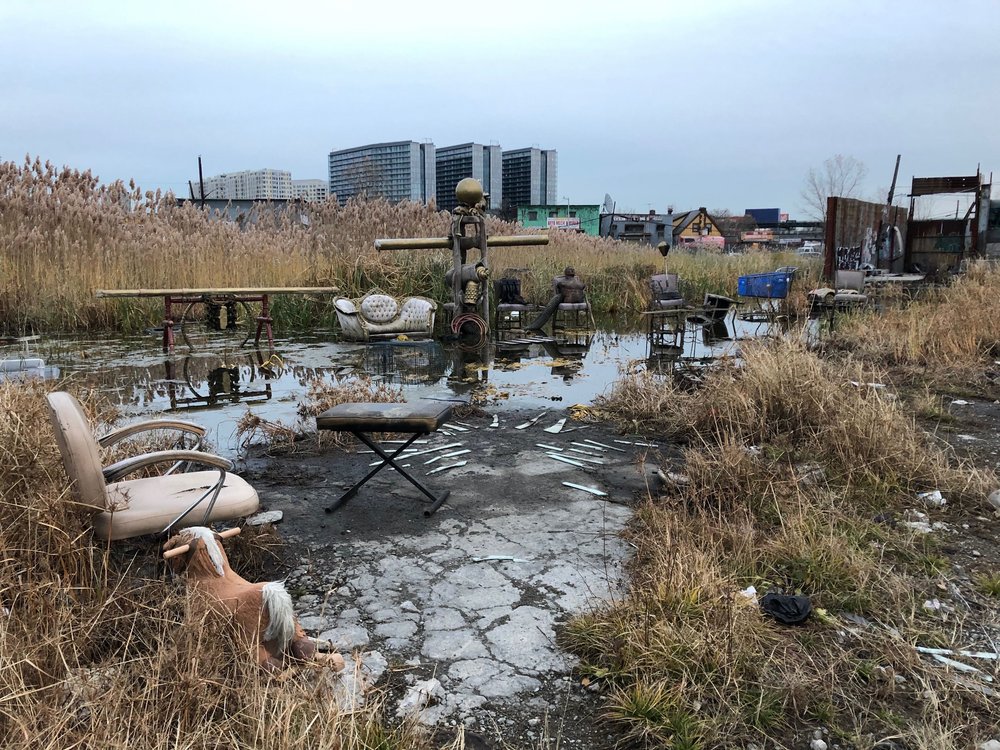
In his 1925 novel “The Great Gatsby,” F. Scott Fitzgerald referred to the industrial area as a “Valley of Ashes,” "a fantastic farm where ashes grow like wheat into ridges and hills and grotesque gardens; where ashes take the forms of houses and chimneys and rising smoke and, finally, with a transcendent effort, of men who move dimly and already crumbling through the powdery air.”
A comprehensive proposal to transform the area only emerged in the 2000s, under Mayor Michael Bloomberg. Bloomberg called Willets Point “another euphemism for blight” and proposed new housing and retail spaces as well as a convention center.
A project ‘decades in the making’
But that project became mired in legal squabbles and concerns about the mix of projects, which at one time included a mall.
Later, the inclusion of thousands of affordable housing units — particularly as the city faced a post-pandemic deficit of an estimated 800,000 housing units — helped win over local representatives, including members of Community Board 7, who insisted that local residents should benefit after enduring decades of blight.
“The Willets Point transformation has been decades in the making,” said Jeff Holmes, a spokesperson for the New York City Economic Development Corporation, “spanning multiple mayoral administrations, but ultimately Mayor Adams’ vision for this long-neglected site is what is getting it across the finish line.”
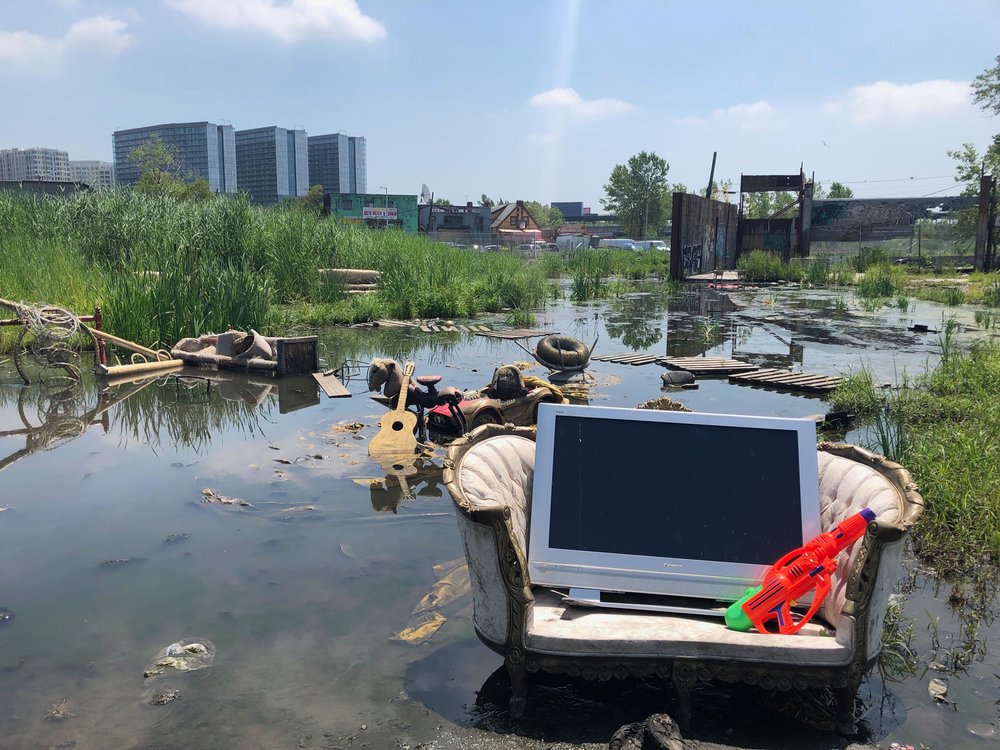
Holmes said the stadium would be “100% privately financed,” built by union labor, and would involve “painstaking environmental remediation of the site after years of neglect.”
In an interview, Moya said “the reception from the community has just been incredible.” That included overwhelming support from Community Board 7, which on Dec. 4 voted 37-2 to endorse construction of the stadium, school and 1,400 homes.
“We are excited to see [15] years of everyone’s hard work come to fruition,” Community Board 7 member Chuck Apelian wrote in an email, adding that a “vibrant, new community” would soon “rise from the remediated ashes of the former Willets Point junkyards.”
Fiscal and environmental concerns
Although advocates for Willets Point's transformation have generated momentum, concerns have been raised about its financial costs.
The city’s Independent Budget Office estimated in January 2023 that the stadium would cost city taxpayers $516 million in unpaid taxes over the course of the New York City Football Club’s 49-year stadium lease from the city, which owns the property. The EDC's Holmes disputed the budget office's findings and said the assessment was “grounded in an entirely implausible scenario.”
According to the EDC, by retaining ownership of the site, the city retains control over its future, while earning up to $4 million in annual rent. It also notes the benefit of 14,000 construction jobs and some 2,500 housing units. Moya also dismissed the concerns.
But Jenny Dubnau, an activist with the Western Queens Community Land Trust, said the budget office's analysis indicates the project is “fiscally irresponsible.”
“It doesn't make sense to give [the deal] to a soccer team that won't pay [property] taxes,” Dubnau said. “Over 30 years of economic research shows that subsidizing professional sports does not create a positive return on investment for localities.”
Marty Edelman, the football club's vice chair, said the project would bring “thousands of jobs” to the area.
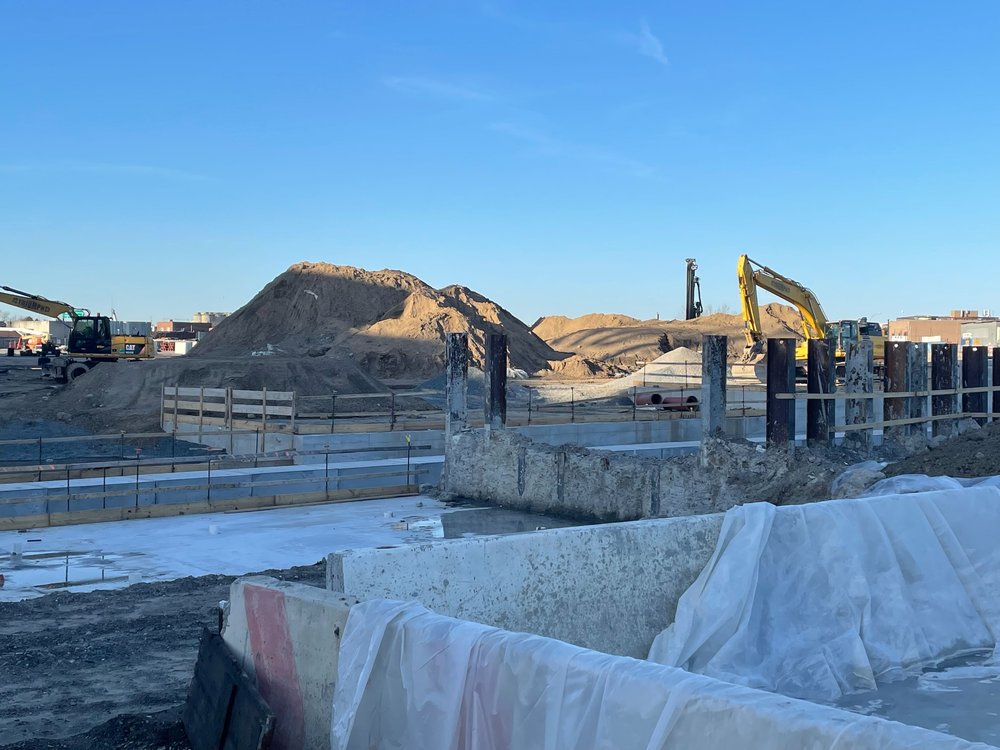
"The Club committed 10 years ago to privately finance the construction of New York City's first-ever soccer-specific stadium, and we have not wavered and are excited to be entering the final approval phase to bring our stadium and desperately needed housing to Willets Point," Edelman said in a statement.
Others in the community have voiced concerns about the environmental impact, and the risks for the thousands of residents who are likely to move into new housing in the coming years.
Rebecca Pryor, the executive director of Guardians of Flushing Bay, said that despite assurances from city officials that the land would be raised above the 100-year floodplain, the area remains highly vulnerable to rising sea levels brought by climate change.
“It's not the kind of climate-resilient development that you see in this day and age,” Pryor said in an interview. “You don't see massive buildings built in a floodplain anymore. That's rarely happening.”
Pryor said she also worried about how the thousands of newcomers would affect the local ecology. Each year, she said, over 2 billion gallons of stormwater and raw sewage entered Flushing Bay and Flushing Creek, “so any project that's going to be adding new toilet connections, new sewer connections to the area needs to be looked at really critically.”
The EDC also dismissed those concerns, stating that wastewater would flow to the Bowery Bay Wastewater Treatment Plant and that the Environmental Impact Study had found it had capacity for the Willets project.
It's not the kind of climate-resilient development that you see in this day and age. You don't see massive buildings built in a floodplain anymore. That's rarely happening.
Rebecca Pryor, executive director of Guardians of Flushing Bay
But Cody Herrmann, an artist, environmentalist and member of Community Board 7, shared Pryor’s concerns.
Herrmann said she gave walking tours of the area over the years and had eventually noticed something: a lone willow tree that stood where many of the former auto shops and other businesses had been cleared. She said she wasn’t the only one who noticed the tree.
“It felt meaningful to a lot of people,” said Herrmann. “People say, ‘Oh, do you know that willow tree?’
The tree, she said, indicated the presence of “a lot of groundwater.”
Besides the willow, she spotted other signs of nature returning to what had previously been brownfields, such as cattails and phragmites, or reed grasses commonly found in wetlands.
“As soon as the businesses were vacated, the site became what it once was,” she said.
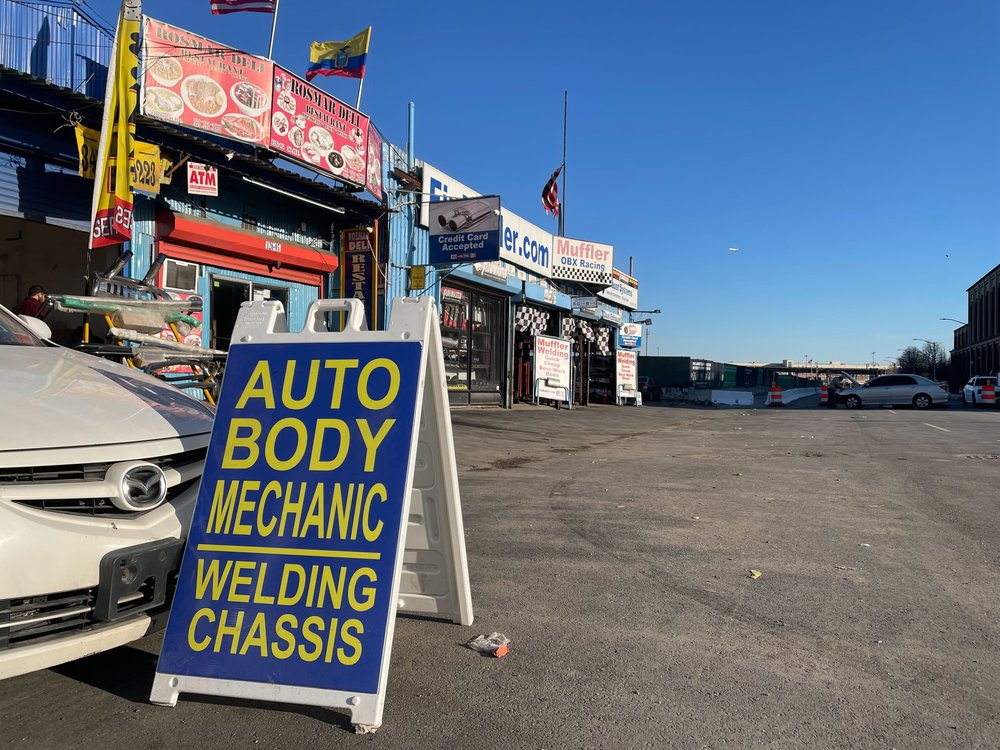
But that was only temporary. At some time in 2018 or 2019, she said, construction crews cleared the willow tree and other plant species.
“The urbanized wetlands are now gone,” she said, “totally razed.” But she worries that the city is making a mistake by placing “marginalized people” in thousands of affordable housing units in “such a vulnerable place.”
While the vast majority of CB 7’s members voted to approve the project on Dec. 4, Herrmann and one other member voted no.
The next steps ahead
Despite the criticisms, Moya said his peers in the Council have largely lined up behind the project. And during a March 12 Council committee meeting, Moya said, the proposal encountered no criticism from members of the public.
The entire Council must still approve the plan. The mayor, who already has signed on, would then have five days to either veto or sign the proposal, and then a timeline of construction would be developed by various public and private entities involved in the project.
Still, the apparent march to approval prompted anger from Queens Neighborhoods United, which penned a Feb. 18 open letter to 14 progressive councilmembers, state legislators and others. The letter criticized the elected officials for not being more vocal about the shortcomings of the project and for allegedly bowing to “member deference.”
But Moya said he’s focused on the stadium to come, and felt “a sense of accomplishment.”
“This is the greatest thing any public official could truly leave behind, especially in a neighborhood that I grew up in, ” Moya said.
He said he pictured “some kid playing in the same fields in Flushing Meadows-Corona Park, envisioning the same thing I had,” the chance to one day don “the jersey of their dreams,” in this case, that of the New York City Football Club.
“That's a beautiful thing,” he said.
Correction: A previous version of this story misstated the reception plans for the Willets Point project received at a March 12 committee hearing. Council member Francisco Moya says it encountered no opposition from members of the public.
Groundbreaking set for Willets Point building project. Will stadium follow? Queens community board endorses plan to bring soccer stadium to Willets Point Plan to bring NYC's first pro soccer stadium to Queens wins key backing NYC’s first soccer stadium hits a snag — the Queens borough president